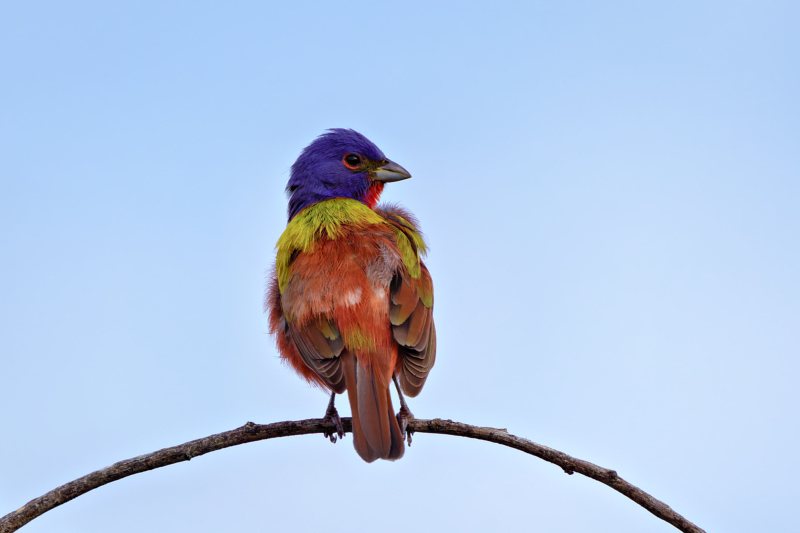Every spring, one of the birds I most look forward to seeing at the Sequoyah National Wildlife Refuge in Oklahoma is the brilliantly colored Painted Bunting. As avid readers of my blog know, I spend countless hours at this refuge trying to capture perfect photographs of the diverse wildlife found there.

But the male Painted Bunting has always been a difficult subject for me due to its preference for dense brushy areas. Just when I spot one of these feathered jewels, it darts back into the tangled branches, evading my camera lens.
That’s why I was so excited on a recent visit to the nearby Wichita Mountains Wildlife Refuge when a male Painted Bunting popped into view perched nicely on an exposed branch. Although not at perfect eye level, it was thrilling to have the opportunity to photograph this breathtaking bird out in the open.
The Painted Bunting aptly earns its French name “nonpareil”, meaning without equal. The male’s vivid blue head, green back, crimson rump and underparts are unmatched in brilliance. No wonder it is often called the most beautiful bird in North America!
These colorful cardinals actually breed across the southeastern and south-central United States before wintering in Florida, Mexico, Central America and the Caribbean islands. In summer they dine on insects while transitioning to a seed-based diet in winter.
Interestingly, the males don’t acquire their spectacular rainbow plumage until their second year. The green females and juveniles use their camouflaged coloring for nesting and protection while young males learn to fly.
At breeding time, the territoriality of male Painted Buntings emerges as they perform visual displays like wing-quivering to attract a mate. The females will often have two sets of eggs in the same season, diligently reusing their original nests.
Whether out in the open or hidden in the safety of dense foliage, sighting a Painted Bunting is always a treat for amateur photographers like myself. Their unmistakable colors and unique backstory make every encounter with this special songbird feel like hitting the Nature photography jackpot!
